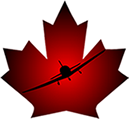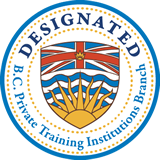 |
|
Diversions
but to substitute for it carefully trained reactions.” We depart our home airport, weather briefing fresh in our minds, flight planning completed and head out up the coast. The weather is not the greatest, but it doesn’t look all that bad. We’ve certainly flown in much worse. Just to be on the safe side, we’ve filled the fuel tanks, so we have plenty of extra airtime in the bank. As we proceed, things begin to look just a bit greyer than we’d hoped. The clouds are just a bit lower and the looked-for warmth of the day that was supposed to burn off the low-lying fog at destination doesn’t seem to be in any big hurry to get to work. Thirty miles out from destination we give Flight Services a call, just to check on local conditions, hoping things are better than they look. The report isn’t favourable. Ceilings are down to 500’; visibility is reported as 2 miles in fog and mist. However, it’s still not looking as bad as it could be, so we carry on for the moment. At twenty miles out we tune in the ATIS, only to hear that ceilings are now down to 300’ and visibility has dropped to ½ mile in fog. Not a good scenario. The airport lies in a shallow valley, surrounded by hills. The temperature is stable. There’s no wind. The prognosis doesn’t point to any improvement any time soon. Time for a new plan. The good news is we made sure we had extra fuel when we departed. More good news is that we’ve been careful with our navigation and are clear about our current location. Even more good news is we have options and some time to explore them and decide on the best one. The really good news is that we have recently reviewed the procedures for diversions and have even practised a couple, just for fun. As we always do when flying, we gather information, process that information, make decisions based on the best information available, act on those decisions and evaluate the results, repeating the process as we go. We’re flying the aircraft and it simply is not a great time to be laying out maps and rulers and protractors and calculators to make a detailed navigational plan. There isn’t the room or the time. There are a few other tasks that take precedence - like keeping the shiny side up! We need to make a coherent and workable plan and we need to do it quickly and efficiently while maintaining situational awareness and control of the aircraft. As much as we might like to do it, we do not have the option of pulling over for a moment to get organised. The aim of a diversion is to make and carry out a plan to arrive at an unscheduled destination safely. If we are to make this, or any exercise, a procedure instead of an emergency, we need to have that procedure clear in our minds and be current and comfortable with the required skills before we begin. The first step, and probably the most difficult one, is making the decision to act. Inertia is a very power motivator: if we’re already doing something, it’s always easier to continue than to do something different. I find slowing the aircraft down very helpful if I need to think something through. We can pick a power setting in the realm of best range so the aircraft is still easy to control. This helps with fuel conservation and it lowers what I think of as the “tension” level in the cockpit. The noise is lower; the speed is less. We have a bit more energy and focus to apply to our thought process. If we look at the scenario we constructed—deteriorating weather and a fogged-in destination—the decision probably seems pretty clear. Too many of us, unfortunately, would be and have been tempted to carry on…just in case. Just in case the fog lifts. Just in case there is enough of a hole to get through. Just in case some form of divine intervention arrives. We’ve all read the accident reports that resulted from that line of thinking. Many of them end with a discussion on controlled flight into terrain (CFIT). So, we’ve made the decision to divert to an alternate destination. Let’s work through our procedure and see how we make out. Not too long ago I attended one of Transport Canada’s instructors’ refresher courses. During a discussion on diversions, a young instructor piped up with a great poem that stuck with me. She recited, “Circle, circle, line. Heading, distance, time. Make a call, and you’ll be fine.” There it is in a nutshell: the procedure for a successful diversion! Unfortunately, I do not know her name, but I do say thanks each time I teach this procedure. Let’s follow it through. Second step, now that we have made our decision to execute the procedure: identify exactly where we are. We need to know our starting point. Fortunately, we’ve been keeping good track of our position as we fly so we can pinpoint ourselves on the map. Good job. Pick a new destination. We’ll want to consider our options and choose the best available one. It may be that a return to home base is the wisest choice. It may be that there is another suitable aerodrome within easy distance that will meet our needs. If we have the extra fuel to give us time for consideration we’ll be thankful. We circle the new destination on our map so we know for certain where we are headed. Now, we take a look at what’s between our new destination and us. We need to get the general terrain fixed in our mind and note any hazards or obstacles and, very important, note any terrain features we can use to help us find our new destination. If we can locate a river or coastline or highway or power line or any other easily visible feature that will lead us where we want to go, our navigation is very much simplified: the VFR pilot’s version of IFR: I Follow Roads... or Rivers… or Railways… Is there an easily identifiable point between us and our destination—preferably not too far from where we are—we can use as a fixed starting point: a set heading point? If so, let’s circle that point and draw a line on the chart connecting our set heading point and our destination. Now, determine a heading from our current position to the new destination. We don’t need to be psychotically accurate here. What we are after is orientation. Unless there are none available, we will be making use of terrain features to help us along our way. However, if our new destination is to the south, we don’t want to head off west unless we have very good reason to do so. There are a couple of easy ways to arrive at a heading. If there is a VOR reasonably close to where we are working on the map, we can simply slide our pencil over to the VOR compass rose and read a heading. I like to point the sharp end of the pencil toward my destination; hey, a guy can use all the help he can get! If it’s too much of a stretch to do that, we can use a simple clock method of finding direction. North is 12:00 o’clock; east is 9:00, and so forth. If we lay our pencil along our intended route, we can make a pretty good estimate of the “time” and convert that to True heading. Take the “time”, multiply by 30 and Bob’s your uncle. 5:00 times 30 is 150 degrees True. We, of course, need to do a quick conversion to magnetic so we don’t get too confused. Here, in the lower mainland, 20 degrees east variation is close enough. For our example: 5:00 x 30 = 150 – 20 = 130 degrees magnetic. Let’s come to that heading so we’re making positive progress while we sort out the rest. Now we’re heading towards our new destination. As we close on our set heading point, we have a few minutes to complete a few more details. It would be an excellent idea to get some idea of how long this new leg will take us to fly. I like to use the old pencil method. Take a look at the indicated air speed - let’s say, for example, we see 100 knots. I can quickly mark off on my pencil or hold my pencil at the correct length and measure off both distance and time. Think of it this way: If we are flying at 100 knots, we will cover 10 miles in 6 minutes; if we are travelling at 80 knots, we will cover 8 miles in 6 minutes. 120 knots gives us 12 miles in six minutes. Remember, we don’t need a totally accurate time calculation; a reasonable estimate is just fine. So, using our little pencil, we measure out the distance to our destination. If it were 30 miles, at 100 knots we can give a good estimate of 18 minutes: 6 minutes for each 10 miles. I generally don’t even bother with doing any conversions at all. I just say to myself as I measure, “…six, twelve, eighteen: 18 minutes enroute.” We might also have an opportunity while flying to our set heading point to do a fuel review: do we have adequate fuel to fly for those 18 minutes and some to spare? As we cross over our set heading point, we take and record the time. Yes, do write it down. On the map is fine. We don’t need to add any more floating material to our heads. Write it down and it becomes a fixed item in our world. We can always refer back and check. Add to the set heading point time our estimated time enroute and we generate a workable ETA. We make a call to Flight Services and amend our flight plan, giving our new destination, intended route and estimated ETA. We’re on the way. We can easily update our progress along the route and revise our estimated time enroute and ETA in light of actual progress. Remember that we did not arrive at our numbers with the benefit of precise weather information—except what we see out the windscreen—or calculators and measuring devices. We can simply pick an easily identifiable point along our route and take the time as we pass over. Let’s say our checkpoint was 8 minutes flying time from the set heading point. That distance travelled on the map now, under actual conditions, is how far we have and can expect to continue flying each 8 minutes unless things change. No need to even worry about actual distance or any of the conversions that might entail. Using our faithful, little pencil, we can take that distance segment and measure how many more of those segments, in our example 8 minute distances, are remaining in our trip. Two and a half? Our new ETA is 20 minutes added to the time at our checkpoint (2.5 x 8 = 20). It appears we have something of a head wind. Why do we even need that ETA? Remember our deteriorating weather? It could be getting into the afternoon with cooling temperatures and rising due point. We might be navigating at a low altitude and we all know how much more difficult it is to find things when you are looking for them at 1000’ or lower. Our ETA is a good way to anticipate our destination coming into sight. If we start seeing the time pass our estimated arrival and no destination appearing, we know we might be flying into the unknown. It’s a very good safety factor to know when we should have arrived so we don’t keep doing something wrong any longer than necessary. Now, that wasn’t too bad, was it? A couple of simple tricks and we were able to efficiently and quickly navigate ourselves to a safe landing. It’s not a half-bad idea to practice these sorts of things once in a while just to keep sharp. It would be a shame to find out just when you need a particular set of skills that they aren’t really there for you. Circle,
circle, line |



